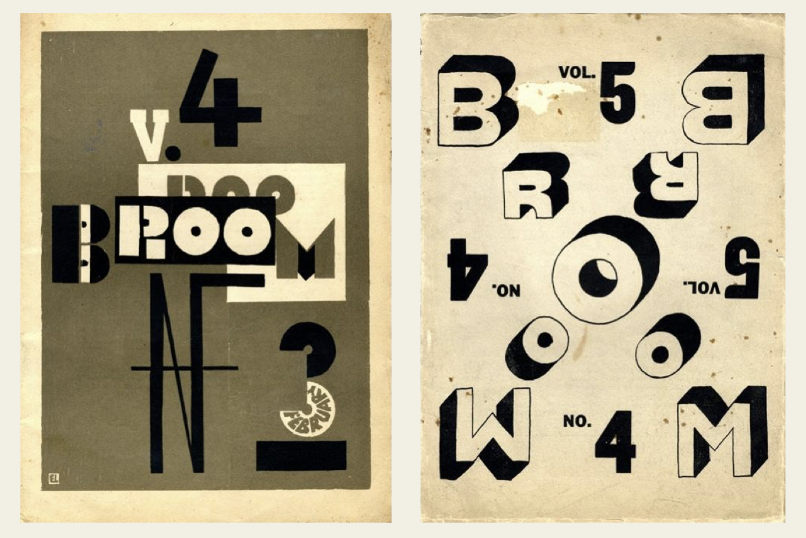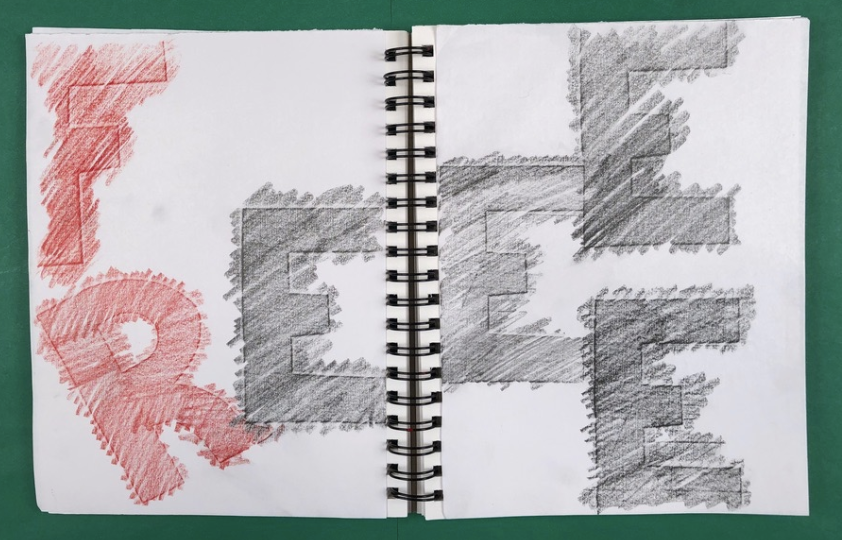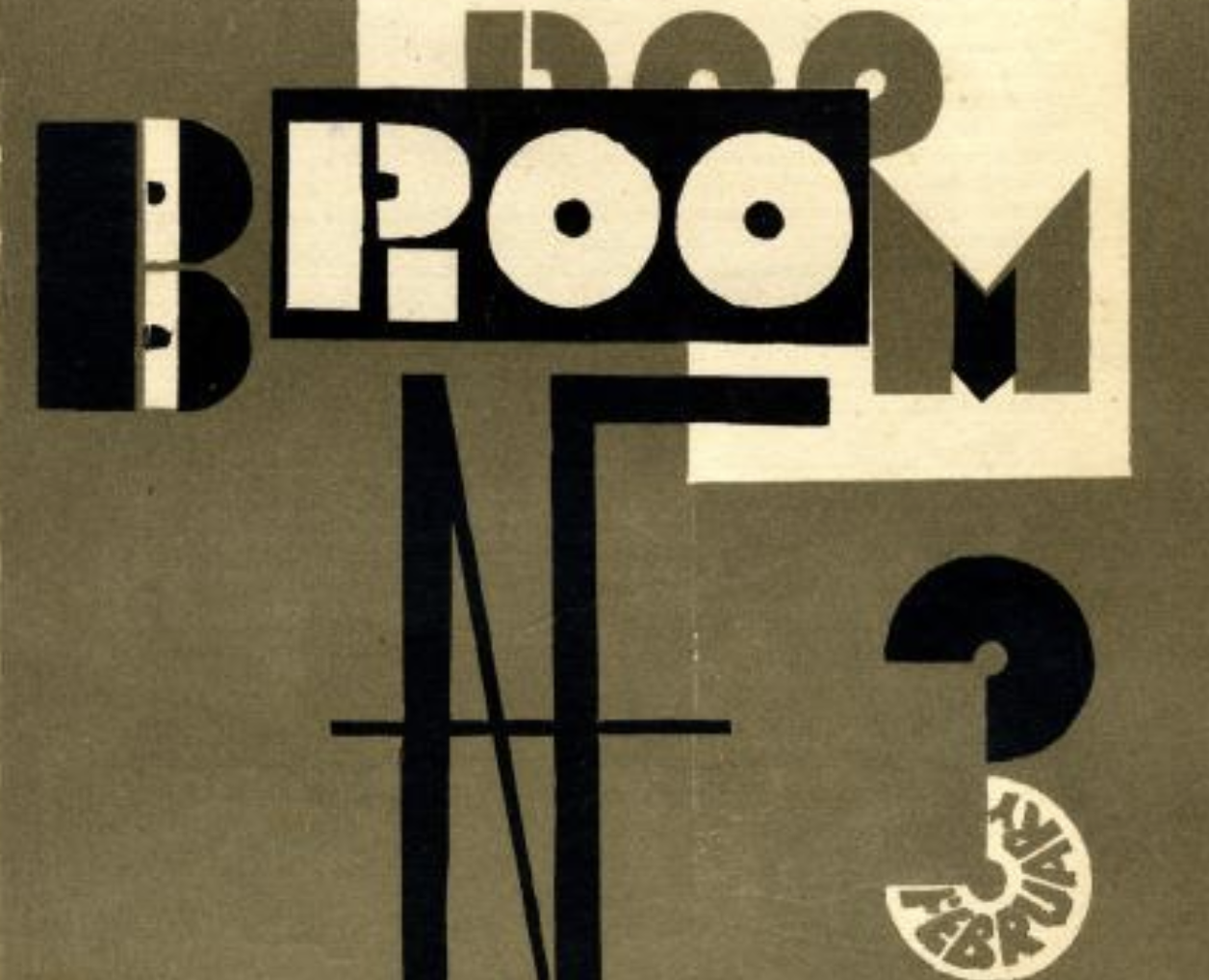Overview
Students will prepare for upcoming art-making lessons using close-looking, speaking, writing, and/or sketchbook prompts.
Materials and Tools
- Pencil
- Sketchbook or one to two pieces of paper
- Cut out letters from Lesson 3
Activities
Note: The following activities are written with sample language you may use with your students. Following the art-making lesson, you may choose as many reflection activities as desired for students to work on in class or independently.
Lesson Introduction (2 minutes)
Hello, artists! In this lesson, we are going to continue learning how text can be arranged in different ways to convey a message. Artists and designers often experiment with different arrangements of text, exploring how to emphasize the meaning of the text.
Step 1: Close Looking: El Lissitzky (10 minutes)
Note to Teachers: Before teaching with a work of art, spend some time looking closely at it on your own. Familiarizing yourself with the artwork will prepare you to guide the close-looking activity.
If your students are new to looking at art together, you can introduce the activity to students in the following way:
Today we are going to spend some time looking at and discussing a work of art together. When we look at art, there are no right or wrong answers. I’m going to ask you to look closely, share your ideas about what you see, and listen respectfully to each other’s ideas. Everyone’s ideas are important. We all see things differently, and when we look at art, we can learn to see through each other’s eyes.

Let’s look closely at two magazine covers for Broom magazine that were created by the Russian artist and designer El Lissitzky in 1923. El Lissitzky and other avant-garde artists from this era felt that society could be reinvented by challenging traditional conventions. Using only letter and number forms, El Lissitzky created these dynamic covers that excite the viewer’s eye.
Compare the two covers.
- How is the word “Broom” depicted on each?
- How does the artist challenge the convention of reading from left to right?
- Where has the artist played with letter form?
- Do these changes make you think differently about the word? How?
Step 2: Writing Activity (5-7 minutes)
Think of the places where you see text in your home or neighborhood. Write a sentence to respond to each of the questions below.
- What text draws your attention?
- What tricks did these artists and designers use to get your attention?
- What text is easy to ignore?
Step 3: Sketchbook Activity (10 minutes)
Look at the letters you used in Lesson 3. Try to imagine these letters as shapes.

Use the letter-rubbing technique to explore putting these shapes together in your sketchbook in different ways. If you have a colored pencil, you can do this with color.
Step 4: Reflecting on Student Artwork (10 minutes)
Ask students to reflect on the following question and share ideas.
- How can you use your letter shapes to create an abstract design?
- What ideas can you express by just arranging shapes?
Vocabulary
Text
Arrangement
Design
Resources
El Lissitzky, Broom, vol. 4, no. 3. 1923, Museum of Modern Art, New York:
El Lissitzky, Broom, vol. 5, no. 4. 1923, Museum of Modern Art, New York
THE ELECTRO-LIBRARY: European Avant-Garde Magazines from the 1920s:

